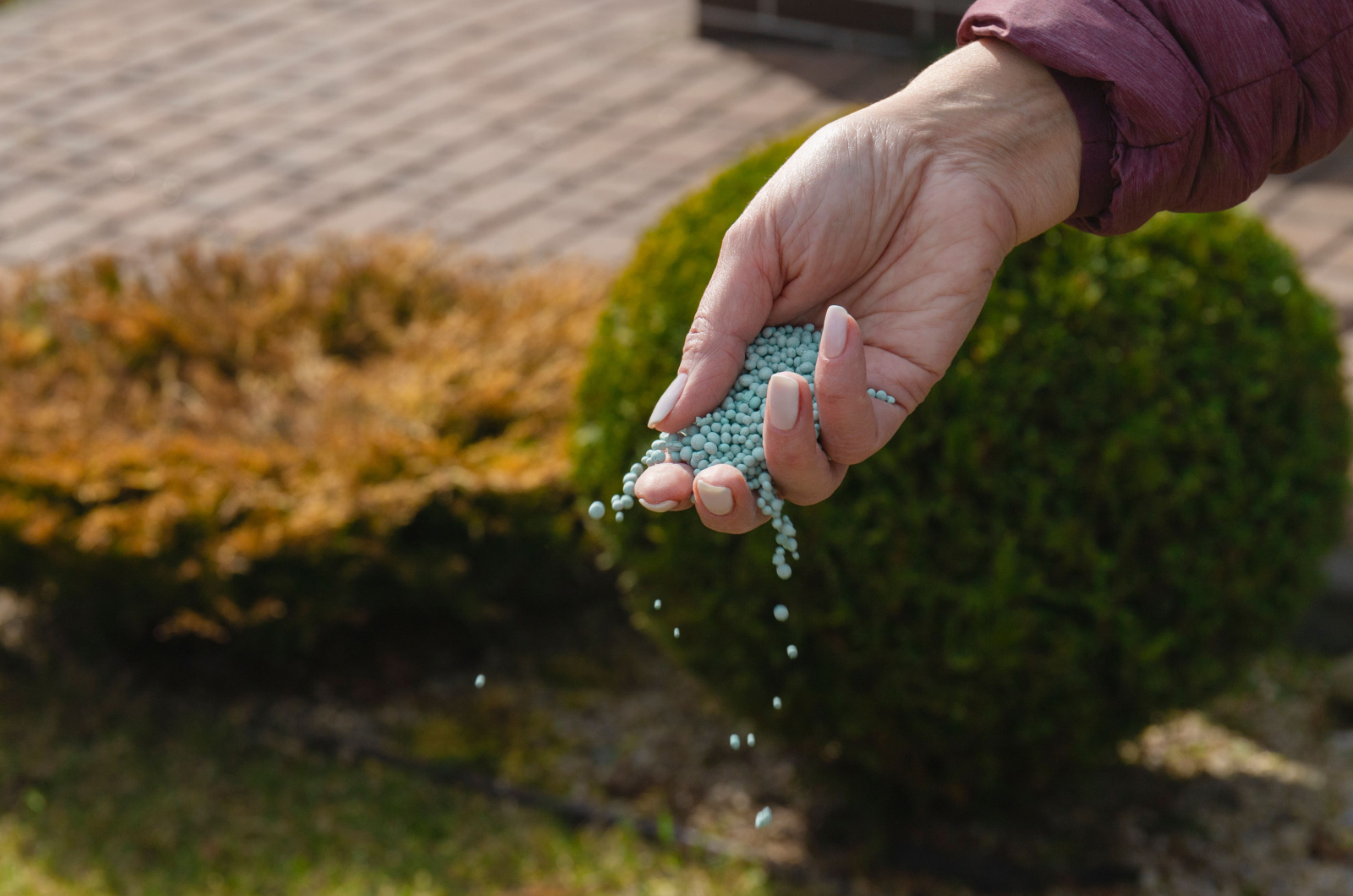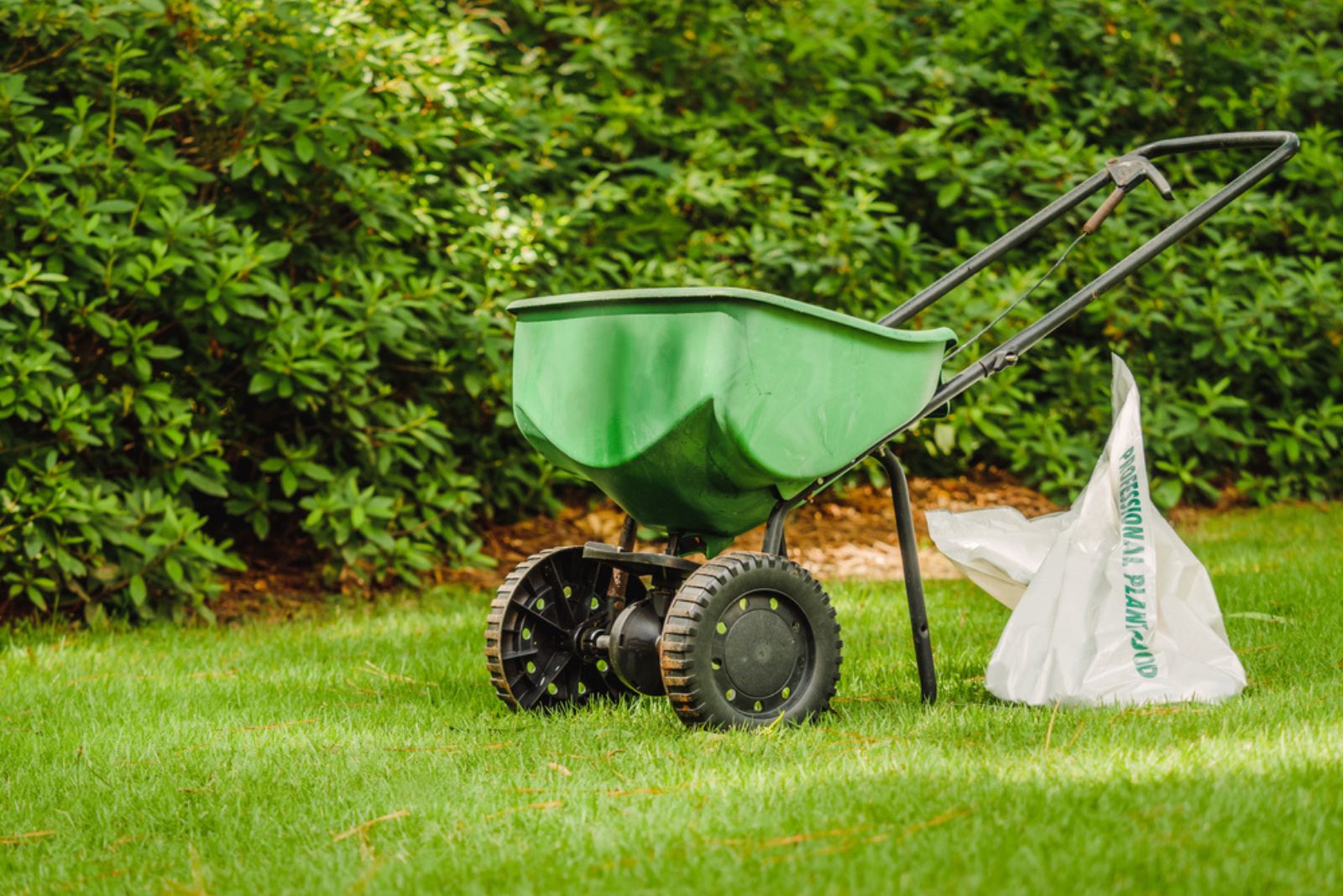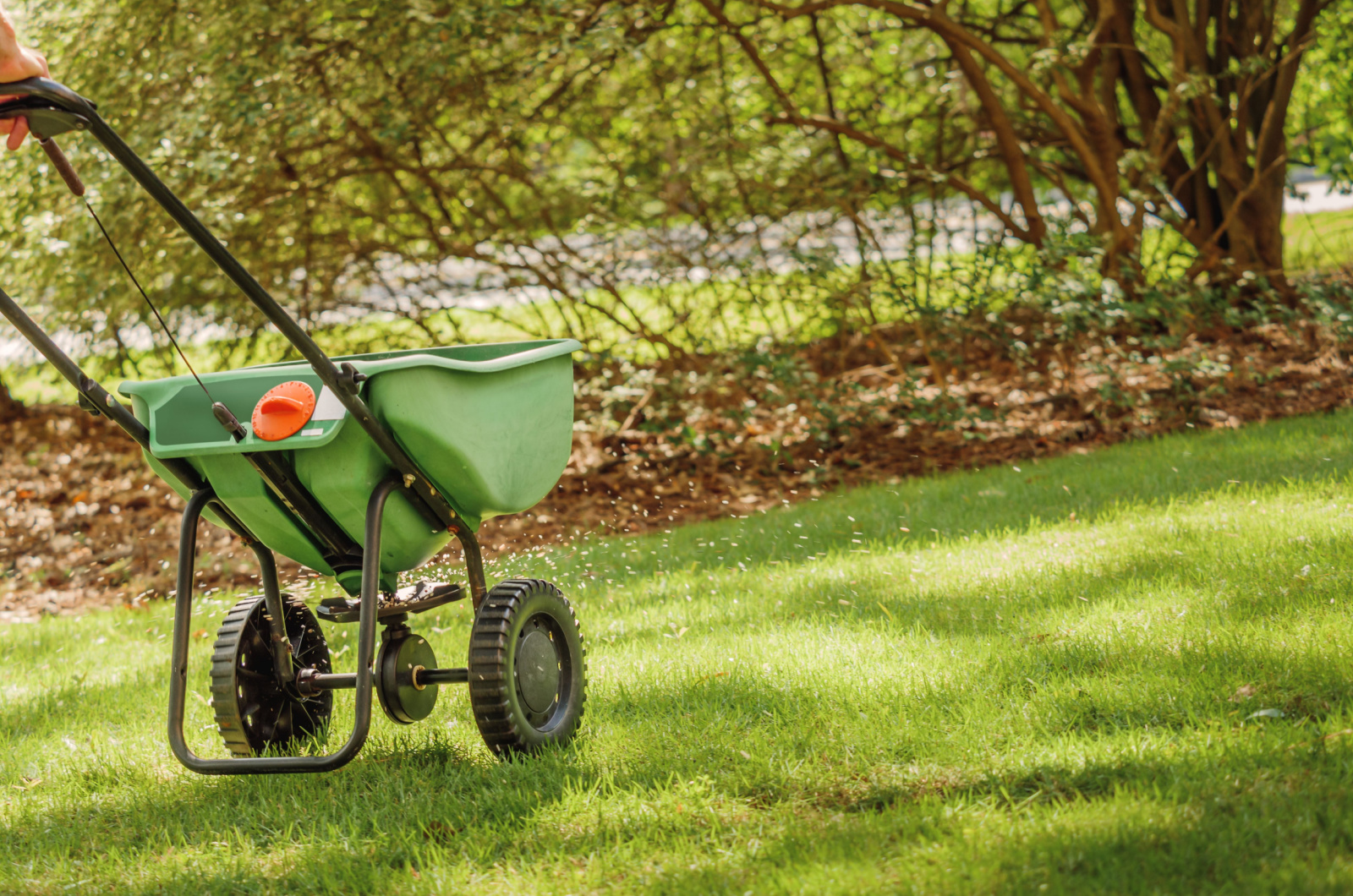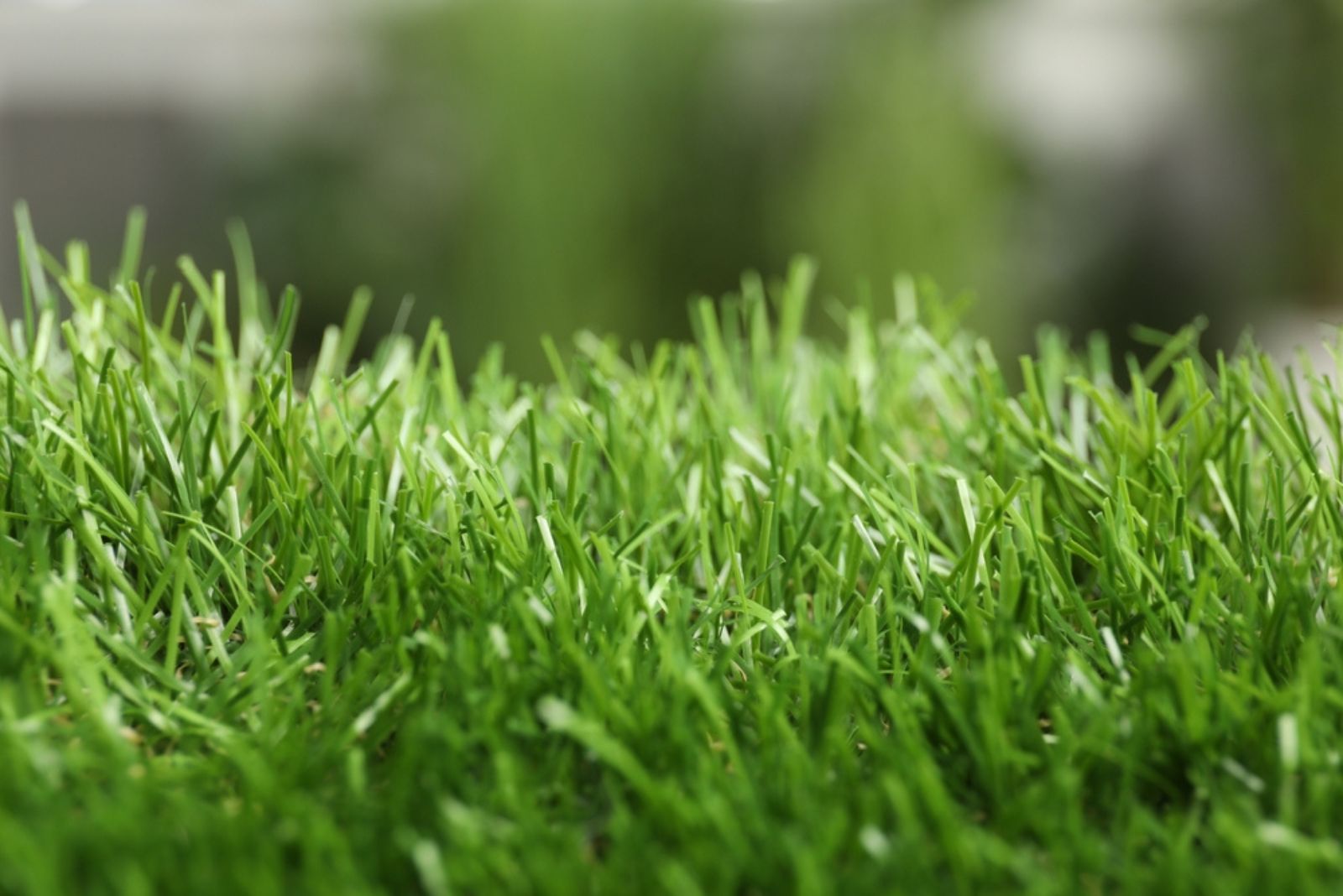Caring for your lawn doesn’t end with the last fall mow. There are other things you should do to keep it healthy.
One of them is fertilizing. Yes, winter lawns need food, too. They may not grow very fast, but they are alive.
The key is choosing the right product and feeding the grass at the right time. Lucky for you, I’m here to give you all the ins and outs of this job.
Let’s get started!
1. Should You Feed Your Lawn In Winter?
One way to winterize your lawn is to give it enough food before the ground freezes. It will help it deal with freezing temperatures much easier. But you shouldn’t do it in the midst of winter! Do it in late fall or in the beginning of winter, before the first frost.
Yet, you shouldn’t use just any old fertilizer. High-nitrogen and potassium lawn food is the way to go.
It will encourage stronger roots and prepare your grasses to store enough nutrients over winter. They will grow more vigorously and vibrantly come spring.
2. When To Apply Winter Lawn Fertilizers
There’s one thing we have to distinguish before getting into the exact time of when to apply winter lawn fertilizers.
The term winter lawn fertilizer is misleading. It doesn’t mean you should feed your lawn in winter, but before the upcoming cold.
The purpose of these fertilizers is to help your lawn endure the winter months. That means feeding your grasses in fall, before the ground freezes. This will ensure your lawn gets a steady supply of minerals during dormancy.
Now to the exact application timing. The best time to feed your lawn one last time is a couple of weeks before the first fall frost.
That can be anywhere between October to December, so watch that forecast like a hawk.
If you fertilize your lawn too late, there won’t be enough time for the grass roots to uptake the nutrients they need.
3. Choosing The Best Winter Nourishment For Lawns
The key to maintaining your lawn all year long is choosing the right fertilizers (among other things).
In general, winter lawn fertilizers tend to contain higher doses of nitrogen and potassium. These nutrients allow the grasses to survive during cold and under snow.
Go for slow-release varieties. They will ensure a steady delivery of minerals throughout the cold season.
Scotts Turf Builder and Pennington have excellent winterizing products. They will promote root growth and greening come spring.
4. When Not to Fertilize
Fertilizing during the wrong time can harm your lawn rather than help it. Avoid fertilizing if the ground is frozen, as nutrients won’t absorb effectively. This can lead to runoff, wasting resources and potentially harming local water systems.
Furthermore, skipping fertilizer during dormant periods prevents stress on your lawn. It’s essential to recognize these dormant phases because applying fertilizer then offers no benefits. Timing is everything, so mark your calendar wisely to avoid mishaps.
5. Understanding Winter Fertilizer Benefits
Winter fertilizers are formulated to prepare your lawn for the cold months ahead, offering essential nutrients that fortify grass roots. These nutrients help your lawn withstand the harsh weather, ensuring a vibrant return in spring.
The focus is on potassium, crucial for root health and disease resistance. Unlike summer fertilizers, winter blends avoid excess nitrogen, preventing unwanted growth spurts. Choosing the right mix can be a game changer for maintaining lawn vigor.
Always select a slow-release formula to maintain nutrient balance. So, give your lawn the winter armor it needs without overdoing it.
Bonus Tips
Understanding how and when to feed your lawn in winter is a crucial part of its care. But it’s not the only one!
Knowing the particulars of mowing is another important part of lawn maintenance. Here’s what you need to know about winter mowing!
Should You Cut Grass In Winter?
This is the million dollar question. Here’s what you need to know!
If you live in cold climates, your lawn will go dormant in winter. That means it will stop growing, so you shouldn’t mow it during this period. Get back to mowing once your grasses resume their growth.
Yet, if you have warm-season grass and live in southern zones, you may continue mowing it. Of course, you should do it less frequently. Keep them at a height of 3.5-4 inches, and all should be fine.
Consequences Of Mowing Too Short In Winter
What you should never do to your lawn in November or before winter is mow it too short. There are dire consequences to this practice!
It will expose the roots to the cold and weaken the grass. Longer blades have a better chance of insulating the roots.
Set the highest mower’s height and your lawn will thrive.
Feed your lawn before winter, don’t mow it too short, and your grass will get over it in a breeze.







